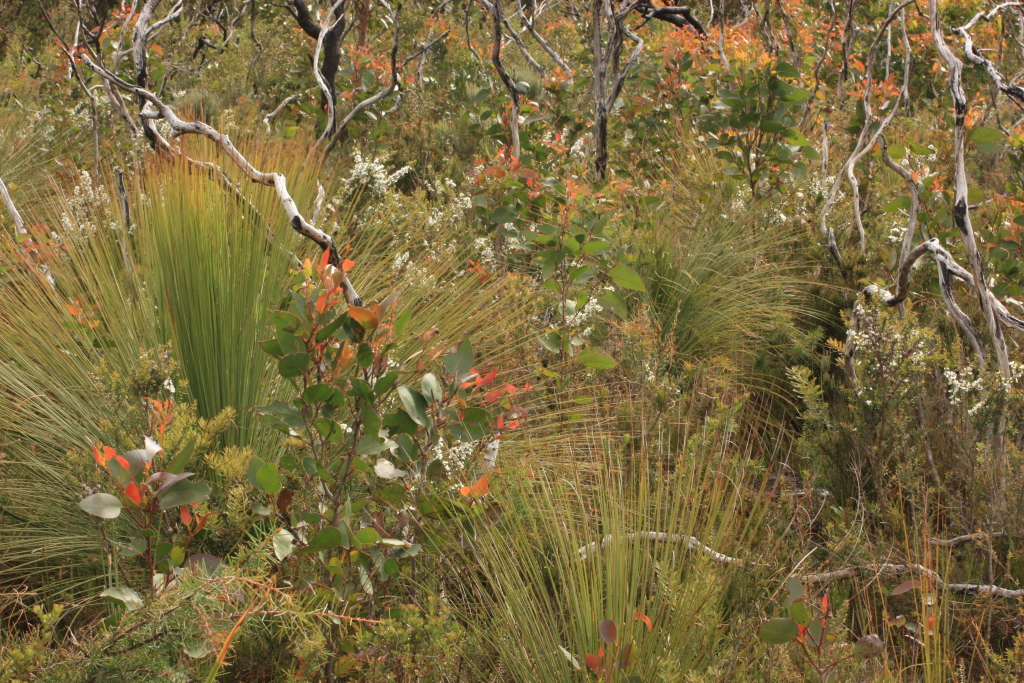Eucalyptus muelleriana
A.W.Howitt Yellow StringybarkTree to 40 m tall; bark rough over trunk and to the smaller branches, stringy. Juvenile leaves sessile, opposite for few pairs, discolorous, scabrous on midrib and margin, then petiolate, becoming alternate, ovate to lanceolate, oblique, glabrous, to 16 cm long, 5 cm wide, glossy, green; adult leaves petiolate, alternate, broadly lanceolate to lanceolate, 8–13 cm long, 1.5–2 cm wide, slightly discolorous, glossy, green; reticulation sparse, with very numerous, island oil glands. Inflorescences axillary, unbranched; peduncles to 1.8 cm long, 7–11-flowered; buds pedicellate, clavate, to 0.7 cm long, 0.4 cm diam., no scar (single operculum); operculum conical to hemispherical; stamens irregularly flexed; anthers dorsifixed, reniform; ovules in 2 vertical rows; flowers white. Fruit pedicellate, hemispherical to truncate-globose, to 1 cm long, 1.2 cm diam.; disc descending; valves 4, near rim; seed dark brown, glossy, smooth, pyramidal but distorted by one curved face, hilum terminal. Flowers Jan.–.
VVP, GipP, CVU, NIS, EGL, EGU, WPro, HSF, Strz, MonT, HFE. Also NSW. Occurs on sandy loams of plains and foothills from the eastern Strzelecki Range and Wilsons Promontory to the Howe Range.
Probably the least evolved of the stringybarks having mostly smooth juvenile leaves, slightly discolorous adult leaves, and prominently pedicellate buds and fruit.
Intermediates between Eucalyptus muelleriana and E. macrorhyncha have been observed in the Warrandyte/Lilydale area (see E. ×brevirostris).
Brooker, M.I.H.; Slee, A.V. (1996). Eucalyptus. In: Walsh, N.G.; Entwisle, T.J., Flora of Victoria Vol. 3, Dicotyledons Winteraceae to Myrtaceae, pp. 946–1009. Inkata Press, Melbourne.
 Spinning
Spinning


